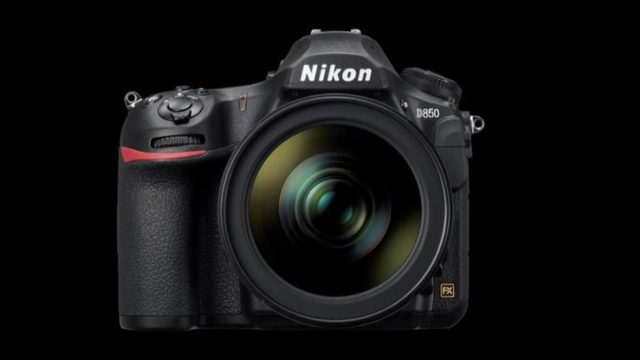
Nikon D850 Review
Introduction:
Nikon D850 is Nikon’s high resolution semi-pro body and is currently one of the most popular DSLR’s on the market. Available since 2017, the 45-Mega pixel D850 is the second highest resolution full frame DSLR you can buy today (the highest resolution DSLR is still the 50-mega pixel Canon EOS-5D S(R) series introduced back in 2015). Unlike the 5D S series which are essentially studio cameras, the Nikon D850 packs a ton of features and horsepower under the hood making it an action worthy camera as we will see later.
In this review I will discuss D850’s strengths, and weakness from a professional bird photographer’s point of view. This review is a result of more than a year of shooting with the D850 under different conditions and includes many sample images. I hope you enjoy it, please note the images are in High Definition format (1920 x 1080) and are best viewed on a high quality desktop screen with no scaling. Click on each image to expand. All images are processed with Capture One Pro 12.
Build quality and handling:
As expected, the D850 is a solidly built body carved mostly from magnesium alloy. It includes rubber seals at all joints to protect against moisture penetration (seen in the picture below, courtesy of Nikon USA) . In my hand, the D850 feels pretty solid. It doesn’t have quite the same “tank-like” feeling of my D5, and the rubber skin is also thinner than the D5 but that is not a very big deal. Unlike the D5, the D850 is assembled in Thailand (parts still made in Japan, of course). I have shot with my gripped D850 from a zodiac where it got almost soaked in salt water, I kept shooting with no issues. Compared to the Canon 5D series, the D850 has overall a higher build quality and feels more solid/substantial. It shares most of its dials and controls with the larger D5.
The D850’s default continuous shooting speed is 7 fps which isn’t quite adequate for wildlife action. Fortunately with the addition of the MB-D18 battery grip and the EN-EL18b high-capacity battery (same as the one used in the D5), the D850 can be boosted to 9 fps. However the battery grip, the high capacity battery and the required charger add both weight and cost to the package. D5 owners only need to purchase the MB-D18 grip since they already have a dual charger and probably a couple of spare EN-EL18b batteries. The grip can also be operated with eight standard AA batteries if needed (at 7 fps), a very neat feature if you are on location and have forgotten your charger or don’t have access to electricity! It can save a whole trip.
Below you can see the comparison between the D850, the D5 and the smaller D500. With the optional battery grip added, the D850 is the largest and the heaviest of the three. The D850 takes both XQD and SD type cards. The SD card is too slow and useless for users who like to shoot action, I wish the D850 had a dual XQD card interface just like the D5.
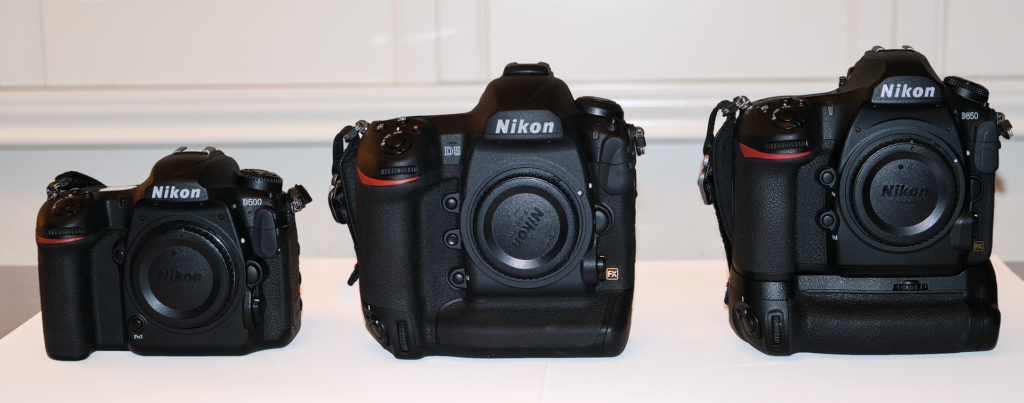
From left to right : Nikon D500, Nikon D5 and the Nikon D850 plus Nikon MB-D18 grip. With the grip attached, the D850 is the largest and the heaviest of the three.
The D850 features a tilting LCD monitor that can tilt both upward and downward. This makes it easier for shooting off a tripod or from waist level. Many bird photographers hand hold their large super-telephoto lenses (I hand hold my AF-S 600mm f/4 E FL at all times) a tilting screen is not really useful for this group of photographers, nevertheless it is a nice feature to have. The tilting mechanism is smooth but the camera is more vulnerable in accidental drops or impact with the screen tilted. The D850 features 2 programmable buttons on the front of the camera.
While the camera features a soft shutter release mechanism, the vibrations from the mirror slap are not quite as well damped as the D5. At slow shutter speeds the mirror vibration can cause some softness when hand holding long lenses. I get a higher percentage of tack sharp files with my D5 or the D500, with either AF-S 500mm f/5.6 PF or the AF-S 600mm f/4 E FL hand held at 1/200sec than I get with the D850. However such slow shutter speeds aren’t useful for shooting birds unless they are stuffed.
The D850’s rear LCD makes extensive use of touch controls which is great for reviewing images or grabbing focus when in live view mode (for those who use it). It is also worth mentioning that the D850 and other Nikon DSLR’s use the older and now obsolete contrast detect AF in live view mode. The LV focusing is hopelessly slow and constantly hunts when trying to focus on anything that moves-even slowly. It is much inferior to the modern hybrid on-sensor AF systems, such as Canon’s excellent dual pixel LV AF. This is unfortunate given the great video quality of both the D850 and D5 (4K 30p). Using fast lenses such as the excellent AF-S 105mm f/1.4E for shooting video, can give dramatic cinema-like effects, but the AF in live view just can’t keep up and spoils the whole thing. Nikon has some catching up to do with Canon’s excellent dual-pixel on-sensor AF in this area.
The viewfinder of the D850 is quite large and bright, the elevated eye piece makes is much easier to view the entire image for folks who wear glasses as I pointed out in my D5 review. Compared to the EOS-5D Mark IV the D850 finder looks significantly larger and brighter partly because of the elevated and rounded eye piece. Just like the D5 the large optical finder is a joy to use and puts any kind of EVF to shame. there is no lag, no noise in low light and no blown highlights or weird colors.
The D850 also features built-in WiFi and Bluetooth for wireless communication but these are only usable for connecting the camera to Nikon’s smartphone app (Snap Bridge) and cannot be used for example for transferring images to a wireless access point. Nikon’s smartphone app is just OK, like other camera manufactures’ apps, the app struggles to connect to the smart phone constantly switching between camera’s WiFi and Bluetooth. At the time of writing this review, Snap Bridge is not working with Apple’s iOS 13. I am not sure which company is to blame, I assume it is Apple since the app used to work before the OS13 update. If Nikon simply provided standard WiFi connectivity one could easily control the camera from a web based interface, a much more robust solution.
Image quality
As always please note when I talk about image quality I expect tack sharp and crisp raw files when viewing at 100% on my 4K reference NEC screen. Other folks may have a different definition of “sharpness”.
The image quality of the D850 at ISO’s below 800 is nothing short of breath taking. It delivers raw files that are sharper and more detailed than any camera I have ever used. The D850’s sensor does not have an optical low-pass filter and the micro contrast/detail it delivers is remarkable. The only problem is that once you get used to this level of fine detail, images from other cameras, including the D5 suddenly appear a bit underwhelming. The ability to crop the 45-mega pixel files is extremely useful to wildlife and especially bird photographers. A 50% crop of a D850 image contains more pixels than a full frame D5 image, and that makes a difference.
Like the D5 the best results from the D850 raw files is obtained by using Capture One Pro. Below are 100% crops (1:1) from RAW of a decoy owl decorated with real feathers processed with C1P. The fine feather details are retained up to ISO-800. At ISO-1600 the details start to degrade a bit. As seen below at ISO-3200 the finer details are a bit softened by noise. For details of my raw processing workflow please see my Capture One Pro guide.
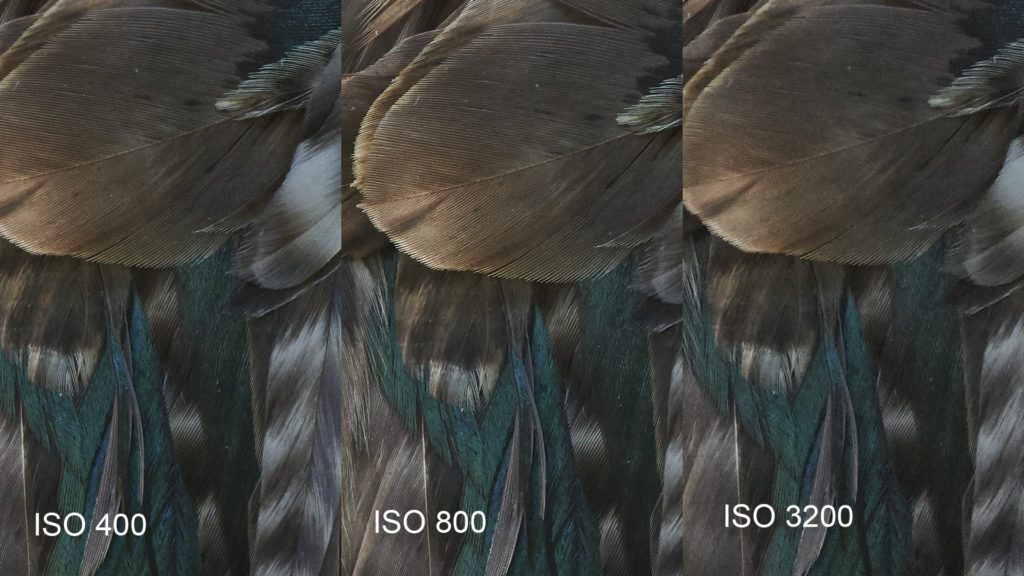
100% crop from raw processed with capture one pro with optimal settings. There is hardly any visible loss of fine details at lower ISO’s but at ISO-3200 the reduced micro-contrast is noticeable. In the field the maximum acceptable ISO is usually ISO-1600. Higher ISO’s can be used under special conditions. Click on the image to view at 100%.
The 100% crop below shows the difference in rendered detailed between the D850 and the D5 under controlled conditions with uniform lightning . The D850 image clearly has more visible detail here even at ISO-1600. In actual low light conditions in the field however, the difference is smaller and sometimes the D5 output is even better.

Left: Nikon D5, right: Nikon D850. Shot with AF-S 500mm f/5.6 PF 1/200 sec ISO-1600 on tripod. processed with C1P. Click on the image to view at 100%.
Field image quality:
The field image quality of the D850 echos the findings above. When I first started shooting with the D850 I saw fine details in some species that I had never seen before. The high resolution sensor is also ideal for shooting small birds. Overall in good light, and when combined with the sharp optics such as either the AF-S 600mm f/4 E FL or the AF-S 500mm f/5.6 PF there is nothing better than a D850 raw, in my opinion. Shown below are 100% crops from a typical D850 raw taken in good light. The raw files are tack sharp and crisp.

100% crop from RAW. D850 AF-S 600mm f/4 E FL + TC14-E III. ISO 800. hand held. processed with C1P. click to view at 100%

100% crop from RAW. D850 AF-S 600mm f/4 E FL + TC14-E III. ISO 640. hand held. processed with C1P. click to view at 100%
The sample below demonstrates the actual cropping ability of the D850. The dowitcher was less than 10% of the frame.
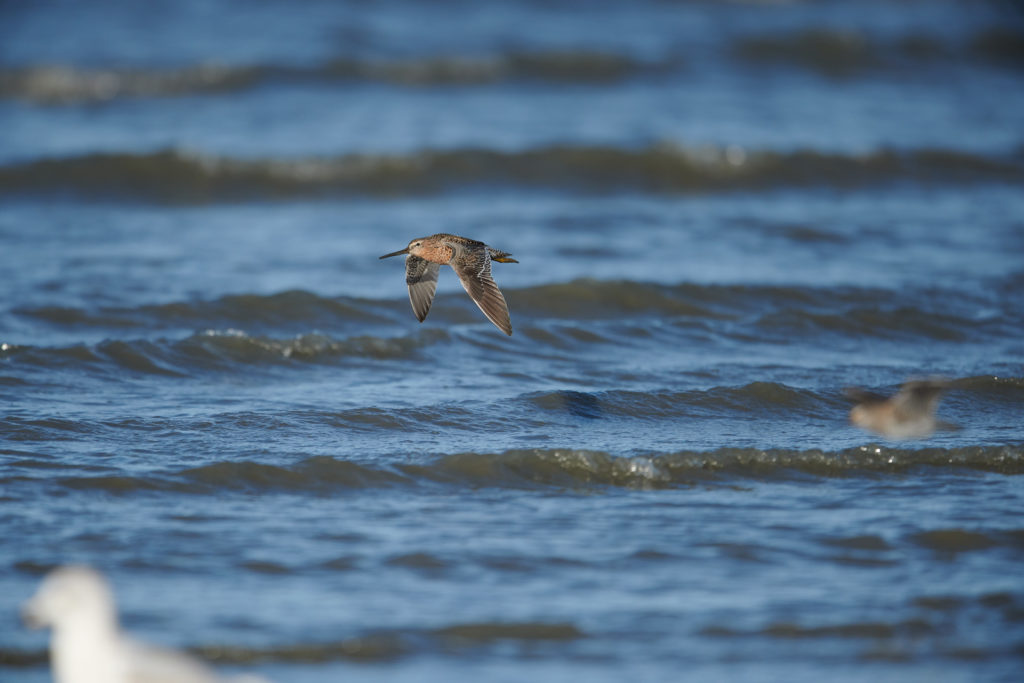
Dowitcher . Nikon D850, AF-S 600mm f/54 E FL + TC14-E III. ISO-1600 f/5.6 at 1/3200 sec. Hand held, processed with Capture One Pro.
What is not so great about D850 is its high ISO performance when shooting birds in low light or under cloudy skies. The fine feather details seem to quickly deteriorate at ISO’s 1600 and above. Overall I would be hesitant to use the D850 above ISO-1600.
Having said that, there are some special circumstances where the camera can produce great results at high ISO’s and under low light conditions. Two such examples are provided below. The red-tailed hawk and the norther harrier were both photographed as the sun was setting over the Pacific ocean (the low sun clearly visible in the pupils). In both cases, the 100% crops from raw, look a tad soft and show visible noise/grain that has impacted the finest details, however the final output doesn’t look bad at all.
In order to achieve acceptable high-ISO results with the D850, like the sample below the subject must be uniformly lit (no shadows) and large in the frame (D850 files should not be cropped more than 50% at very high ISO’s). Careful processing with Capture One Pro and calibrated noise reduction in Neat image are both needed to a) maximize the details and b) remove the grain from the feathers without softening it too much. The details of both processes are described in detail in my C1P guide for Nikon and the PP guide (co-authored with Artie Morris).
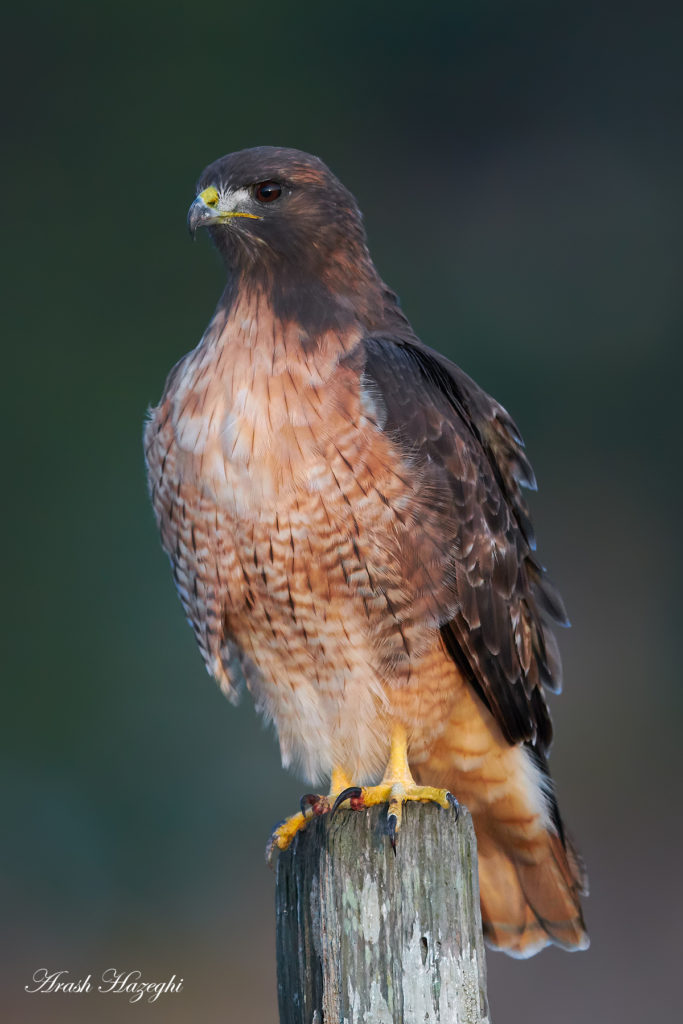
Red-tailed hawk. Nikon D850 and AF-S 600mm f/4 E FL. ISO-2000 f/4 at 1/2500sec hand held. Processed with C1P. Click on the image to enlarge. about 70% of the original capture.
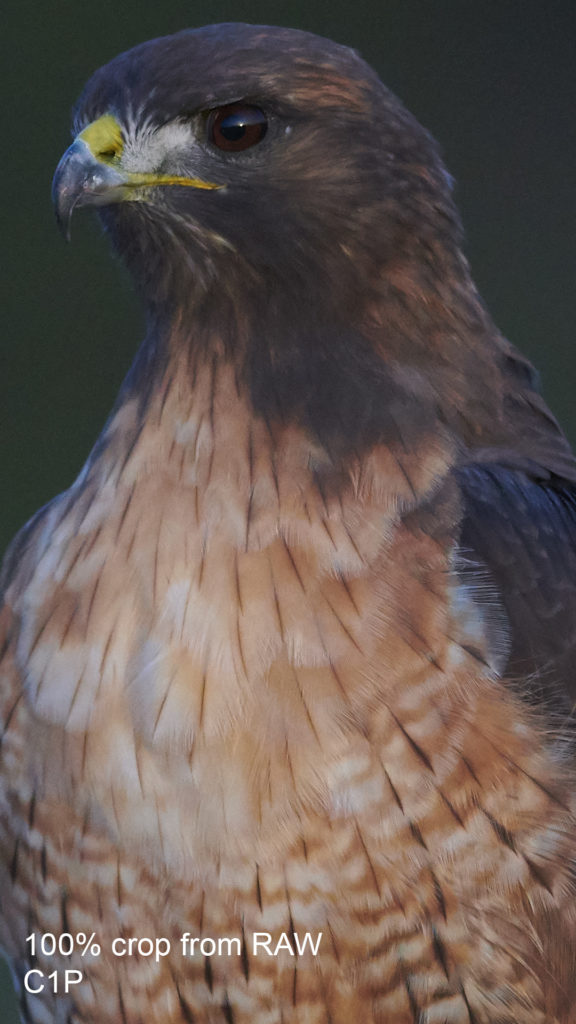
100% crop from RAW from the image above. Processed with optimal settings in C1P. image was taken in low light. The exposure was slightly lifted for the final output.
Here is another high-ISO example, a juvenile northern harrier.
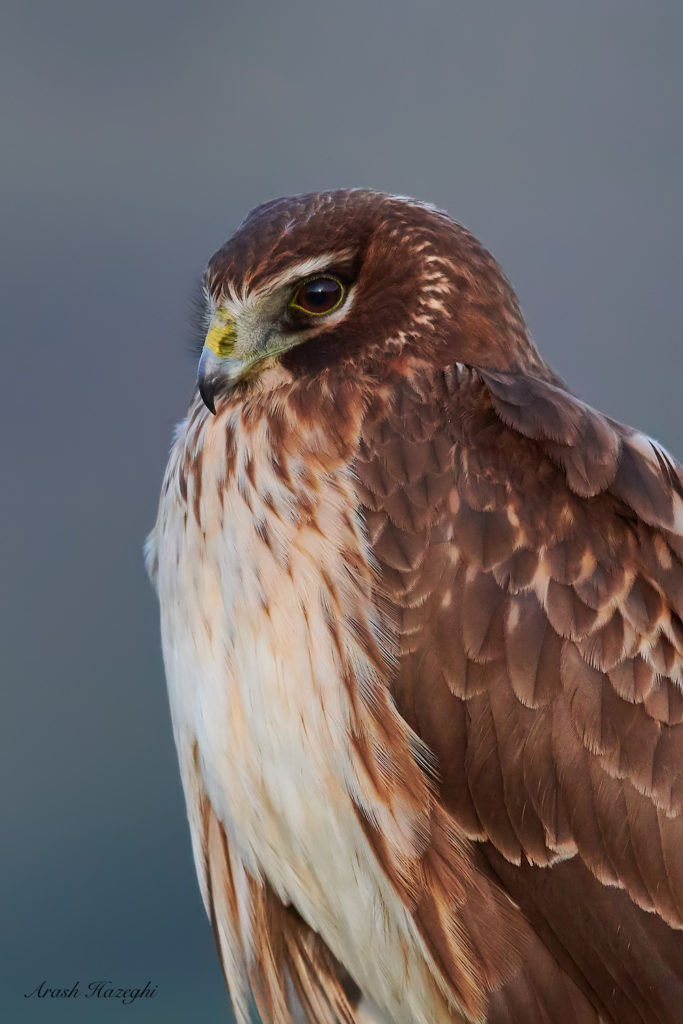
Juvenile Northern harrier. Nikon D850 and AF-S 600mm f/4E FL + TC-14E III. ISO-3200 f/5.6 at 1/3200sec. Hand held. processed with C1P. Click on the image to enlarge. Approximately 50% of the original
100% crop from RAW shown below.
In conclusion , the image quality of the D850 is mind blowing in good light and with sharp lenses. However, the image quality can deteriorate quickly at higher ISO’s and in low light. The dense 45-mega pixel sensor has inevitably compromised the high ISO performance, but given its excellent performance otherwise this is an acceptable compromise IMO. If I know I am going to be shooting in low light, I would pick my D5 any day.
AF performance
A high image quality without a top notch AF system is not useful for bird photographers who like to capture dynamic images of birds in flight or action wildlife shots such as a high speed prey chase. When I was shooting with Canon, I also preferred the 30-mega pixels files of the EOS-5D Mark IV to the 20-mega pixel files of the EOS-1D X Mark II . However, overall the AF performance of the 5D series always fell short compared to the 1D series. Despite having a similar AF system on paper, the 5D cameras were never able to acquire and track BIF as well as the 1D. As a result I was always hesitant to use the 5D cameras for flight and action photography despite its superior image quality to the 1D (under most circumstances). My 5D bodies always remained in my bag as backup bodies from the day I purchased to the day I sold hem. I am happy to report that with the Nikon D850, that is not the case. Nikon has really given the D850 everything they could. It essentially uses the same AF system as the flagship D5 and the same improvements that I saw when shooting with the D5 (see my review) were observed with the D850. The D850 AF system makes it possible to capture complex subjects and is up to the job for capturing world-class images as evident by the variety of the images below.
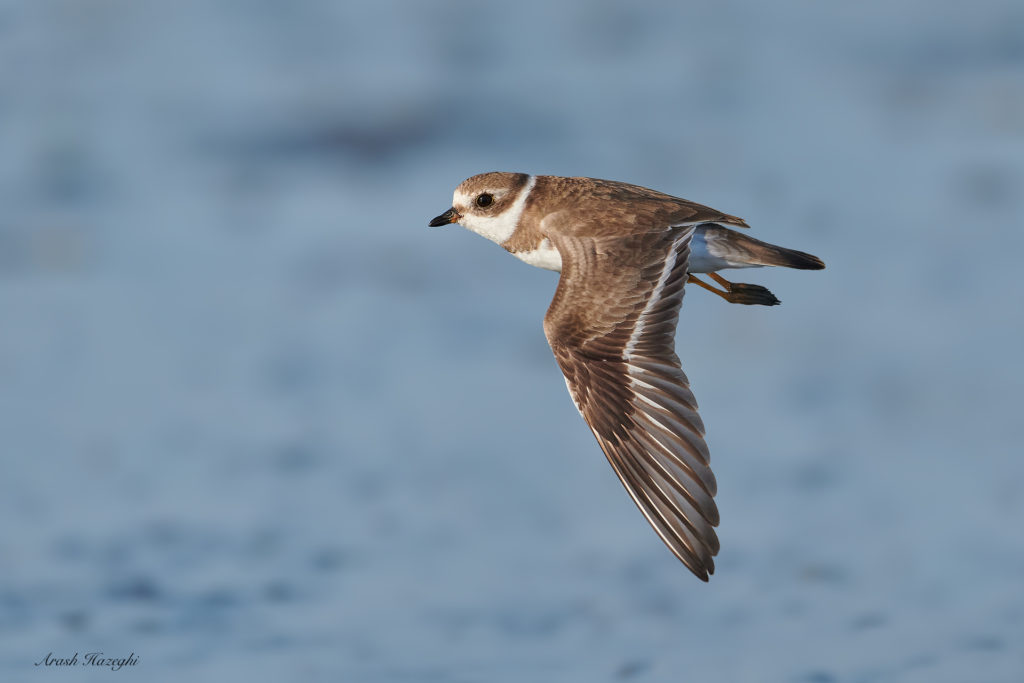
Semipalmated plover. Nikon D850, AF-S 600mm f/4 E FL + TC-14E III. ISO 640 f/5.6 at 1/3200 sec. Hand held, processed with Capture One Pro. Click on the image to enlarge

Dowitcher Nikon D850, AF-S 600mm f/4 E FL + TC-14E III. ISO 640 f/5.6 at 1/4000 sec. Hand held, processed with Capture One Pro. Click on the image to enlarge
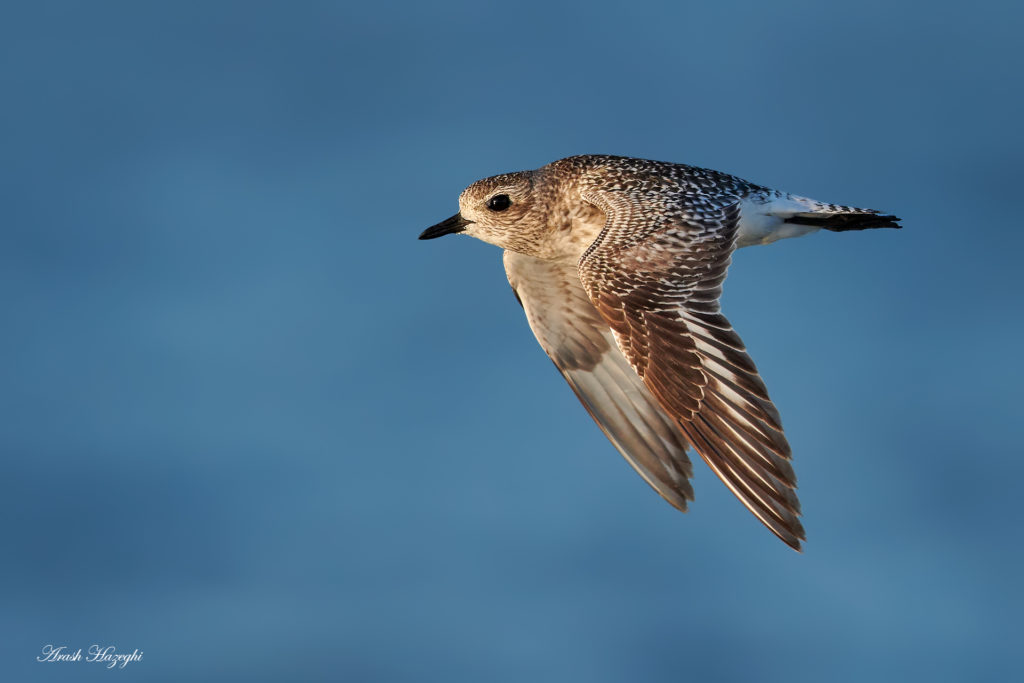
Black-bellied . Nikon D850, AF-S 600mm f/4 E FL + TC-14E III. ISO 1250 f/5.6 at 1/3200 sec. Hand held, processed with Capture One Pro. Click on the image to enlarge
100% crop from the image above, processed with C1P.

100% crop from the image above. Nikon D850, AF-S 600mm f/4 E FL + TC-14E III. ISO 640 f/5.6 at 1/3200 sec. Hand held, processed with Capture One Pro. Click on the image to enlarge
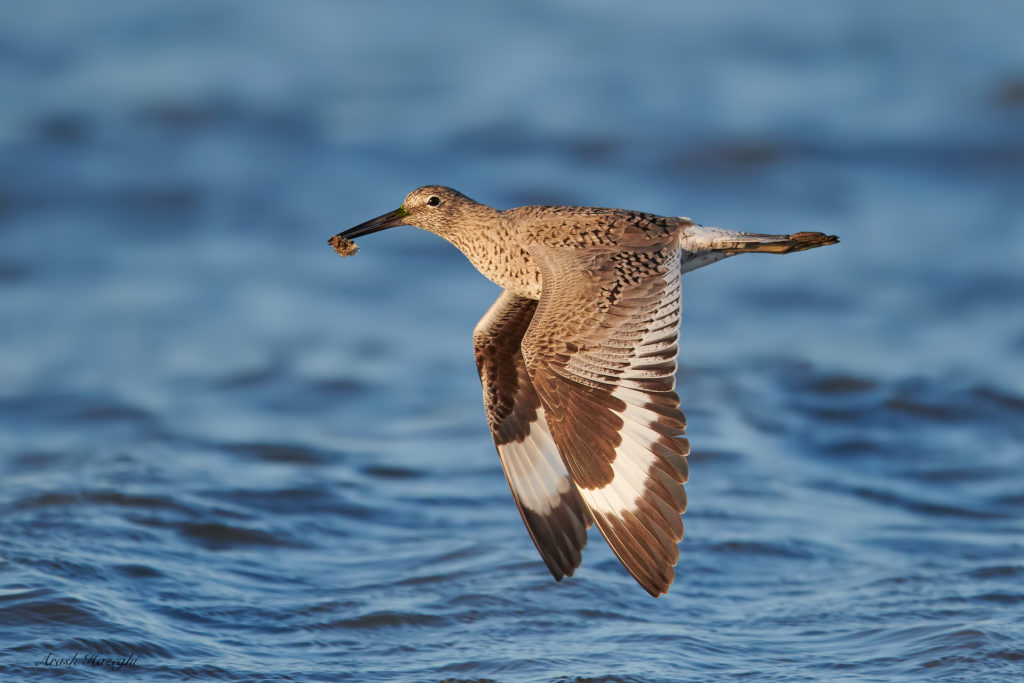
Willet with dinner. Nikon D850, AF-S 600mm f/4 E FL + TC-14E III. ISO 1250 f/5.6 at 1/4000 sec. Hand held, processed with Capture One Pro. Click on the image to enlarge
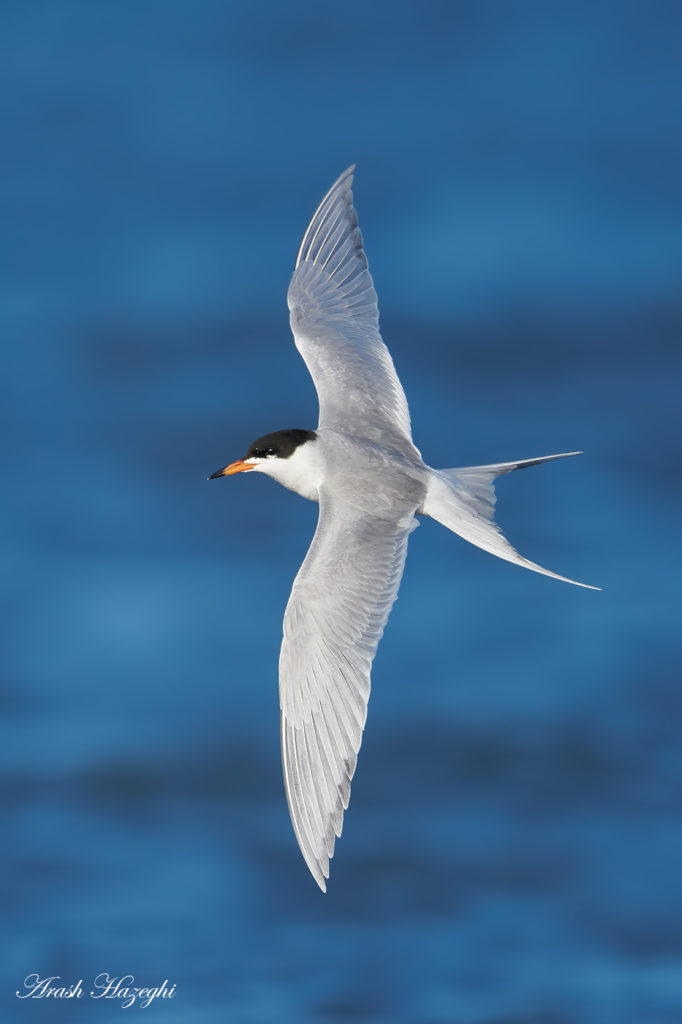
Forster’s tern. Nikon D850, AF-S 600mm f/4 E FL + TC-14E III. ISO 640 f/5.6 at 1/3200 sec. Hand held, processed with Capture One Pro. Click on the image to enlarge
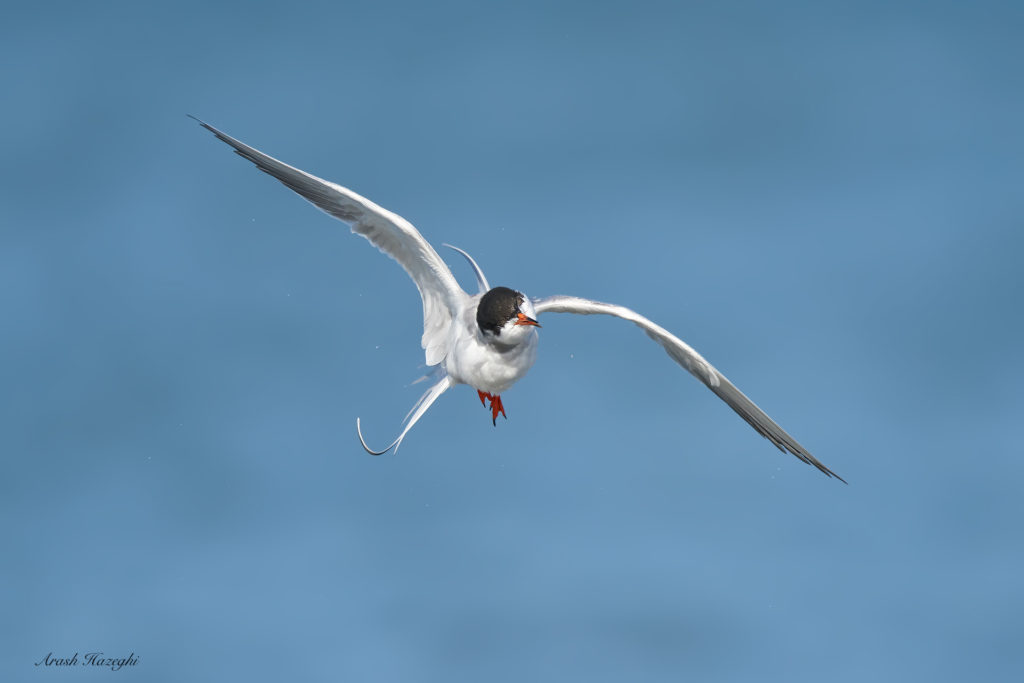
Forster’s tern. Nikon D850, AF-S 600mm f/4 E FL + TC-14E III. ISO 640 f/5.6 at 1/3200 sec. Hand held, processed with Capture One Pro. Click on the image to enlarge

Marbled godwit. Nikon D850, AF-S 500mm f/5.6 PF + TC14-E III. ISO 1000 f/8 at 1/3200 sec. Hand held, processed with Capture One Pro. Click on the image to enlarge
The D850 is great for capturing small birds in flight

Semipalmated plover. Nikon D850, AF-S 600mm f/4 E FL + TC-14E III. ISO 400 f/5.6 at 1/3200 sec. Hand held, processed with Capture One Pro. Click on the image to enlarge
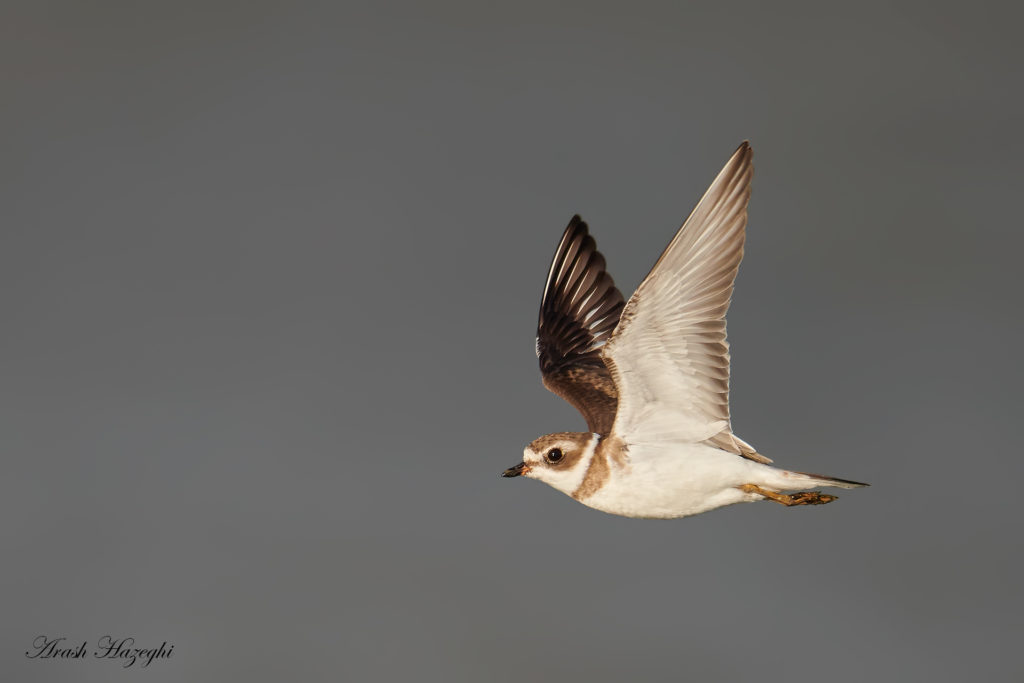
Semipalmated plover. Nikon D850, AF-S 600mm f/4 E FL + TC-14E III. ISO 800 f/5.6 at 1/3200 sec. Hand held, processed with Capture One Pro. Click on the image to enlarge

Meadow lark. Nikon D850, AF-S 600mm f/4 E FL + TC-14E III. ISO 1250 f/5.6 at 1/3200 sec. Hand held, processed with Capture One Pro. Click on the image to enlarge
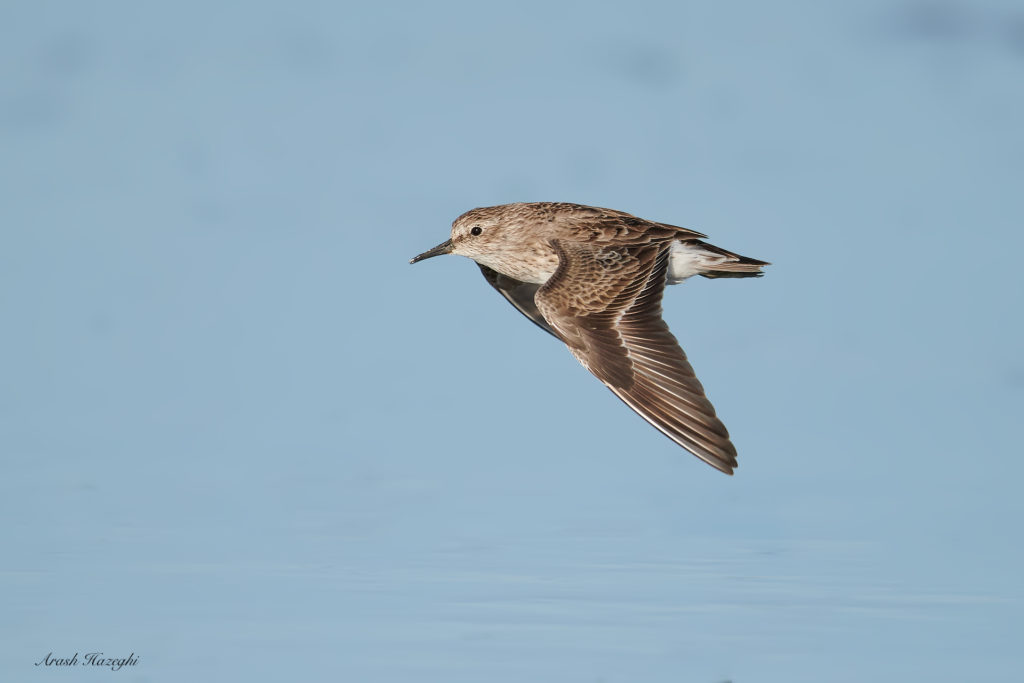
sandpiper, Nikon D850 and AF-S 600mm f/4E FL + TC14E-III ISO 640 1/4000 sec f/5.6 hand held, processed with C1P. Click on the image to enlarge.
For making highly- detailed images of perched birds, the D850 is the no brainier choice.
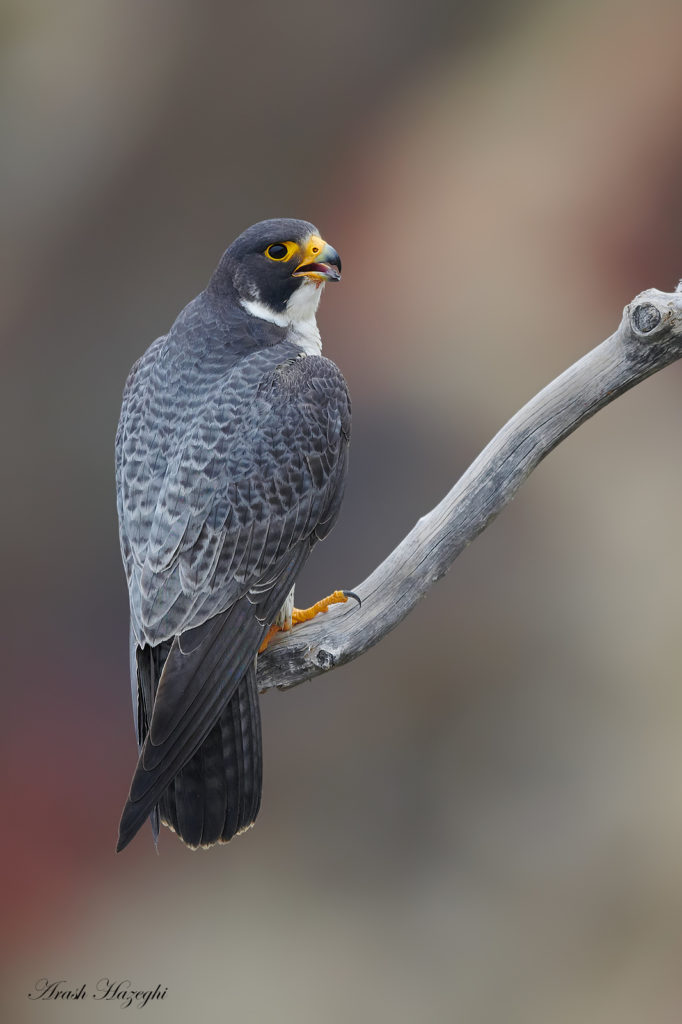
Peregrine falcon (adult) Nikon D850, AF-S 600mm f/4 E FL. ISO 1600 f/4 at 1/3200 sec. Hand held, processed with Capture One Pro. Click on the image to enlarge
The D850 is ideal for photographing skittish birds such as the CA white-tailed kite.
Continuous shooting Buffer:
The factor that can limit the D850’s ability to capture the peak of the action frame is not the AF but its buffer capacity. Because of the large 45 mega-pixel files, the buffer capacity of the D850 is limited. Even when using the fastest XQD card available (I use Sony’s 128GB XQD cards) the camera can only shoot at full 9fps for about 30 frames or a little over 3 seconds. This could be inadequate for situations with multiple birds and interactions. You need to hold off firing a deep burst and instead time the burst carefully. When the buffer fills up the camera slows down noticeably (even the AF response slows until the buffer is clear) and this can cause some missed frames. This is the price one has to pay for the high resolution 45-mega pixel files. For shooting intense action day in and day out, D5 has a clear advantage and would be my primary choice. Nikon has promised compatibility with the new CF-express cards via a new firmware, it remains to be seen if the faster memory card can reduce the buffer flush time and thus fit a few more files in the buffer before filling up.
Nevertheless, I have been able to get some descent action frames with the D850 by relying on my experience to anticipate action.

Juvenile northern harrier top side view. Nikon D850, AF-S 600mm f/4 E FL + TC-14E III. ISO 640 f/5.6 at 1/3200 sec. Hand held, processed with Capture One Pro. Click on the image to enlarge
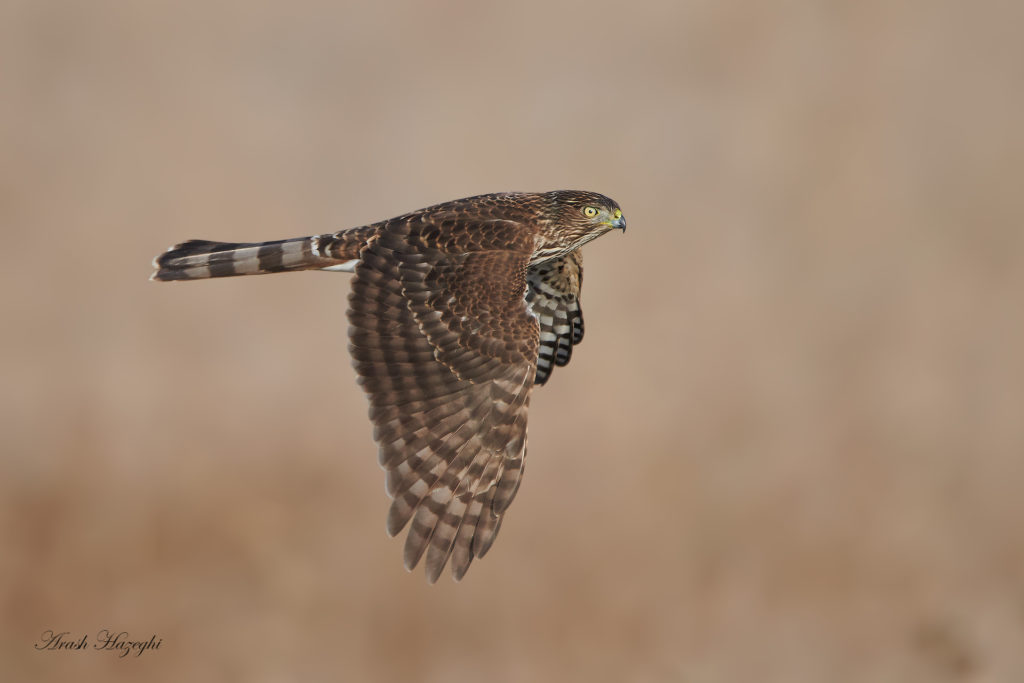
Juvenile cooper’s hawk. Nikon D850, AF-S 600mm f/4 E FL + TC-14E III. ISO 500 f/5.6 at 1/3200 sec. Hand held, processed with Capture One Pro. Click on the image to enlarge
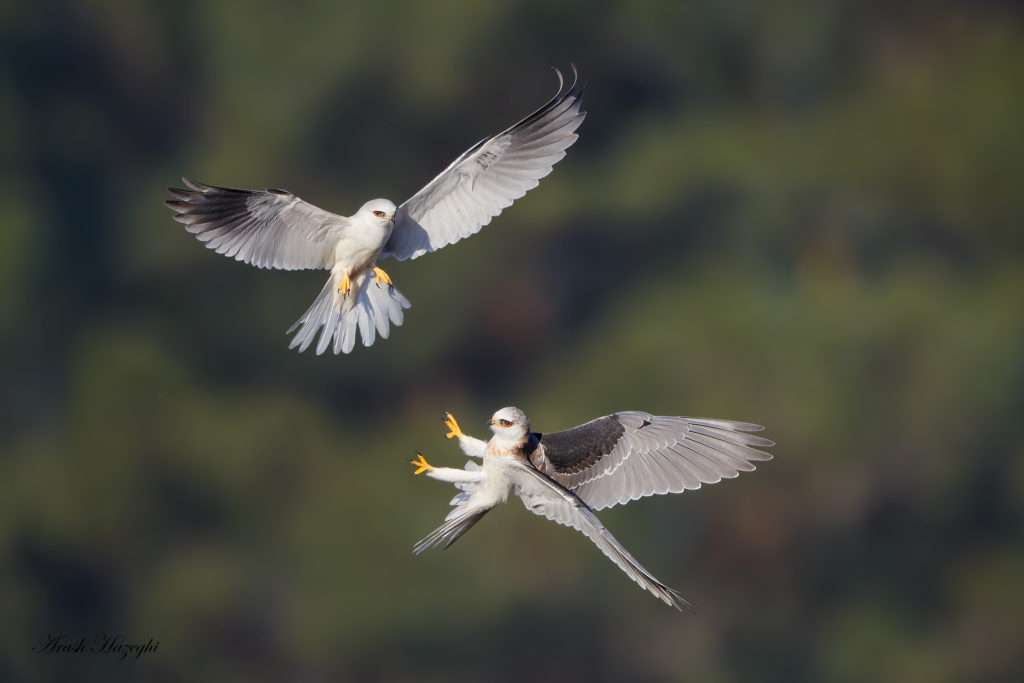
Adult (top) and juvenile (bottom) white-tailed kites. . Nikon D850, AF-S 600mm f/4 E FL + TC-14E III. ISO 640 f/5.6 at 1/3200 sec. Hand held, processed with Capture One Pro. Click on the image to enlarge
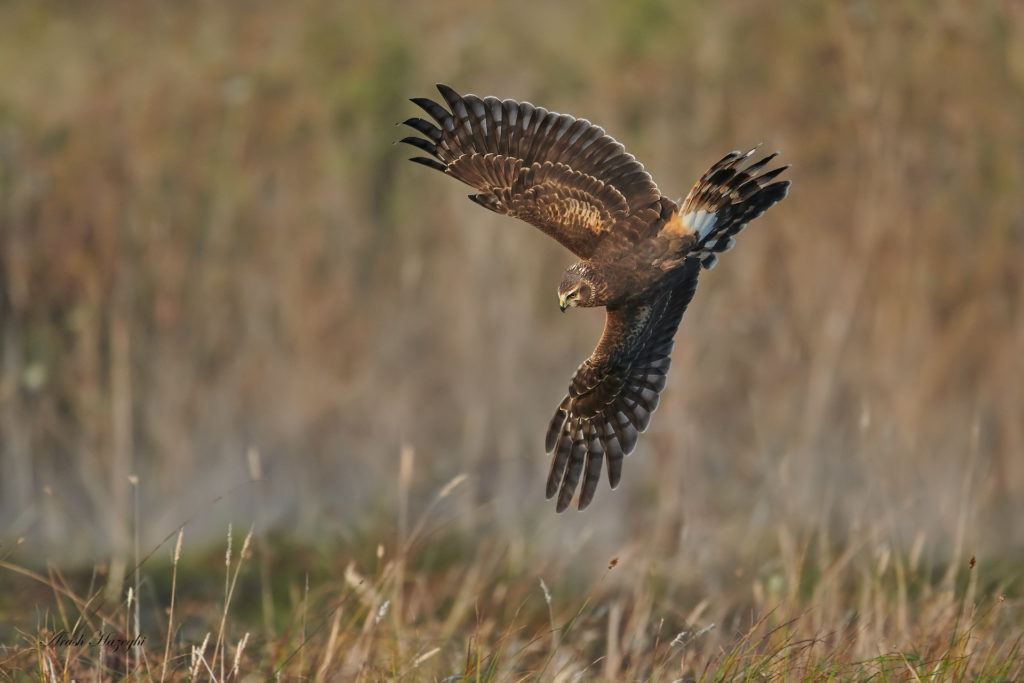
Female norther harrier (juvenile) dive for prey. Nikon D850, AF-S 600mm f/4 E FL + TC-14E III. ISO 1600 f/5.6 at 1/3200 sec. Hand held, processed with Capture One Pro. Click on the image to enlarge
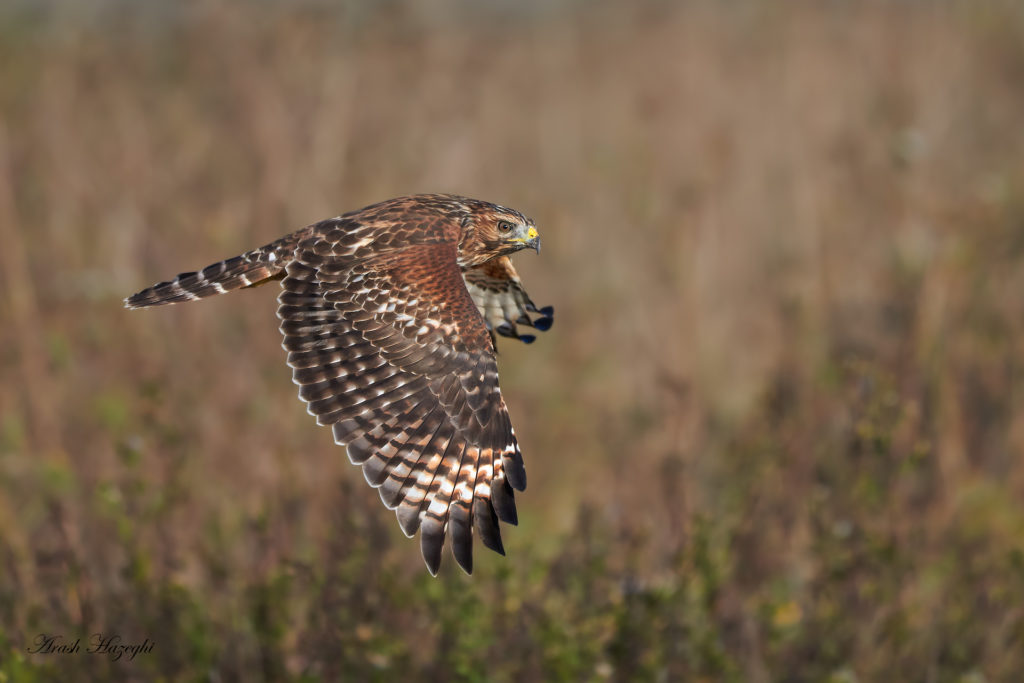
CA red-shouldered hawk in habitat . Nikon D850, AF-S 600mm f/4 E FL + TC-14E III. ISO 640 f/5.6 at 1/3200 sec. Hand held, processed with Capture One Pro. Click on the image to enlarge
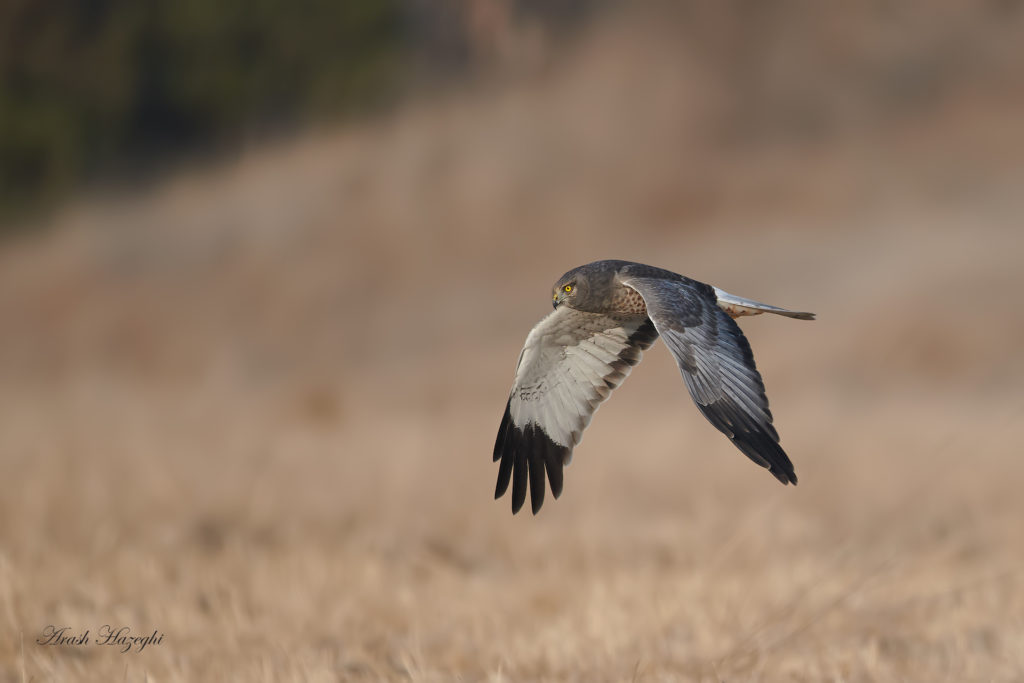
Male northern harrier (aka grey ghost). Nikon D850, AF-S 600mm f/4 E FL + TC-14E III. ISO 640 f/5.6 at 1/3200 sec. Hand held, processed with Capture One Pro. Click on the image to enlarge
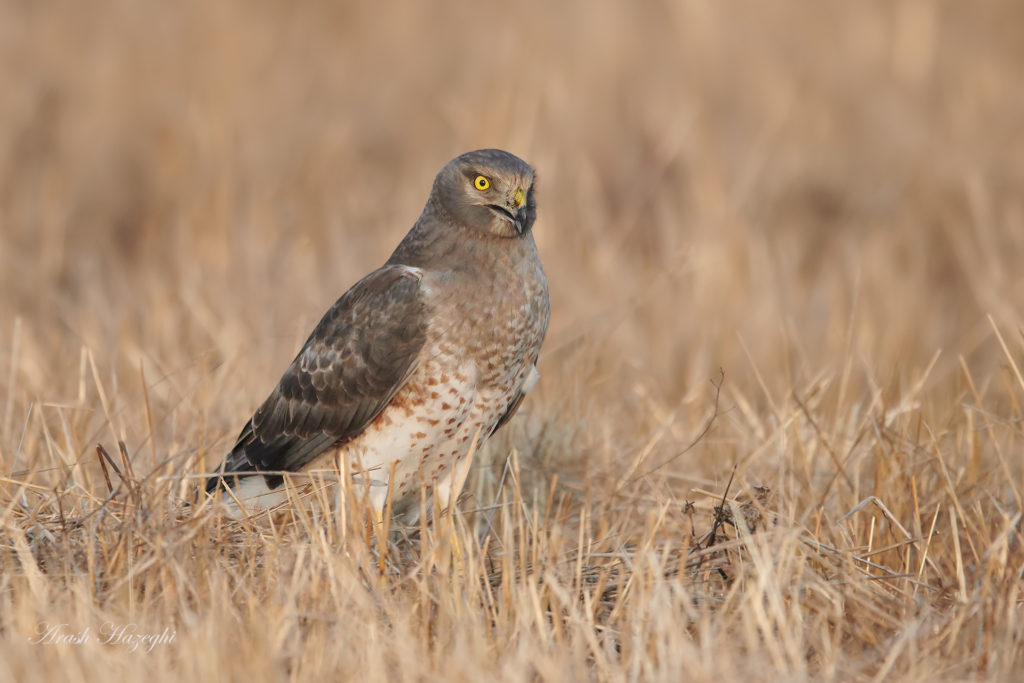
Male harrier (aka grey ghost) Nikon D850, AF-S 600mm f/4 + TC14-E III PF. ISO 2000 f/5.6 at 1/3200 sec. Hand held, processed with Capture One Pro. Click on the image to enlarge
The D850 is also a great companion for the light Nikon AF-S 500mm f/5.6 PF lens. (see my review of the PF here)
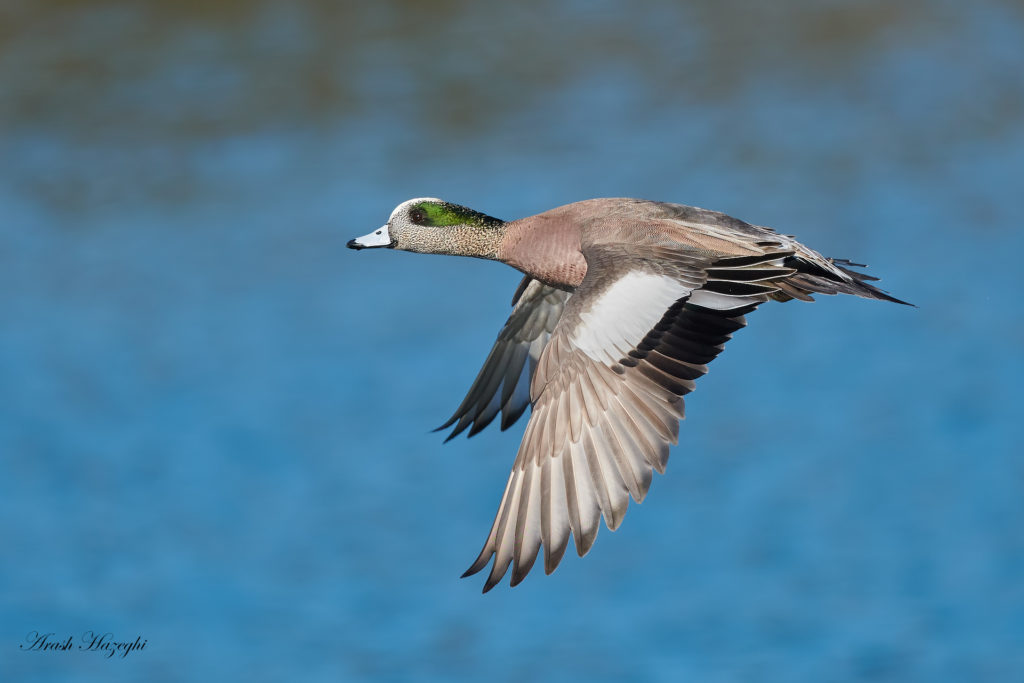
American wigeon. Nikon D850, AF-S 500mm f/5.6 PF. ISO 640 f/5.6 at 1/3200 sec. Hand held, processed with Capture One Pro. Click on the image to enlarge

Northern pintail. Nikon D850, AF-S 500mm f/5.6 PF. ISO 640 f/5.6 at 1/3200 sec. Hand held, processed with Capture One Pro. Click on the image to enlarge
The D850 AF is almost as good as the D5-but not exactly the same- it has not been intentionally crippled to put some distance between the two bodies. The D850 has less processing power than the D5 and as a result the AF is not 100% as responsive as the D5 as I pointed out in my D5 review. With addition of the TC14-E III to any f/4 prime lens or in low light (overcast) conditions, an well-experienced BIF photographer will notice some differences between the D5 and the D850.
One scenario where the difference between the D5 and the D850 becomes very noticeable is when shooting with a maximum aperture of f/8. In this scenario he difference between the D5 and other Nikon bodies for BIF is day and night. However this is somewhat a moot point because the the higher pixel density of the D850 gives it the same reach (in terms of pixels) as the D5 with an additional 1.4X TC.
Given that the optical quality of the Nikon 2X TC does not meet my standards, the only combination that resulted in a max. aperture of f/8 in my testing was the AF-S 500mm f/5.6 PF + TC14-E III. I used this combo to shoot ducks and shore birds on a few occasions and got some keepers as well, but overall the keeper ratio was somewhat disappointing. I would stick with maximum aperture of f/5.6 or faster when shooting BIF with the D850 (or the D500).
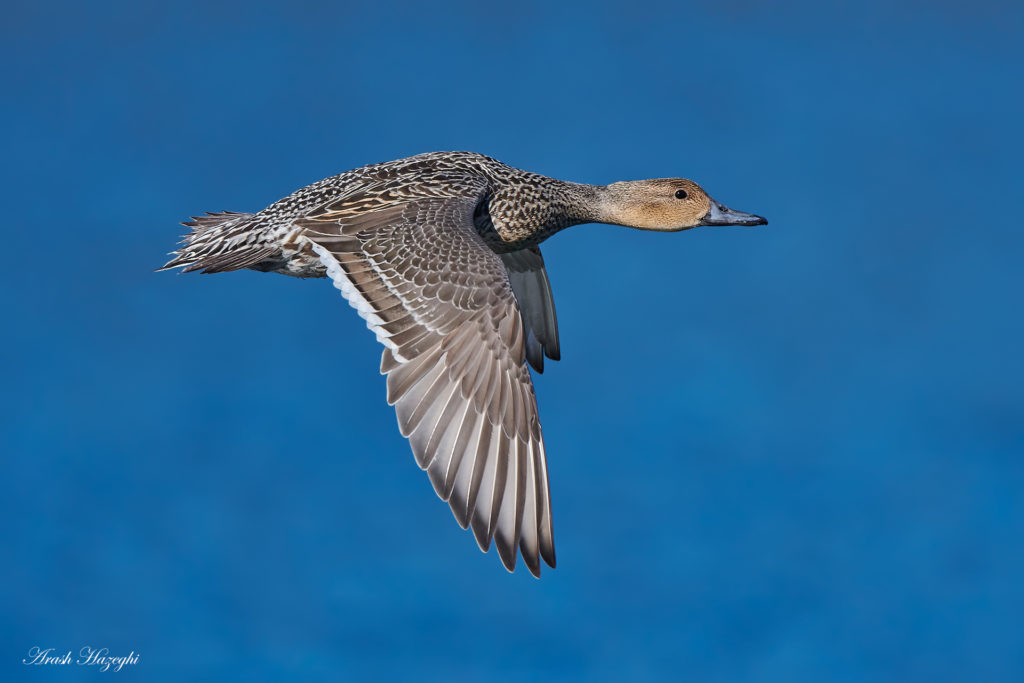
Female northern pintail. Nikon D850, AF-S 500mm f/5.6 PF +TC14-E III. ISO 800 f/5.6 at 1/3200 sec. Hand held, processed with Capture One Pro. Click on the image to enlarge
more sample images….

Female northern harrier (juvenile) . Nikon D850, AF-S 600mm f/4 E FL + TC-14E III PF. ISO 1000 f/5.6 at 1/3200 sec. Hand held, processed with Capture One Pro. Click on the image to enlarge
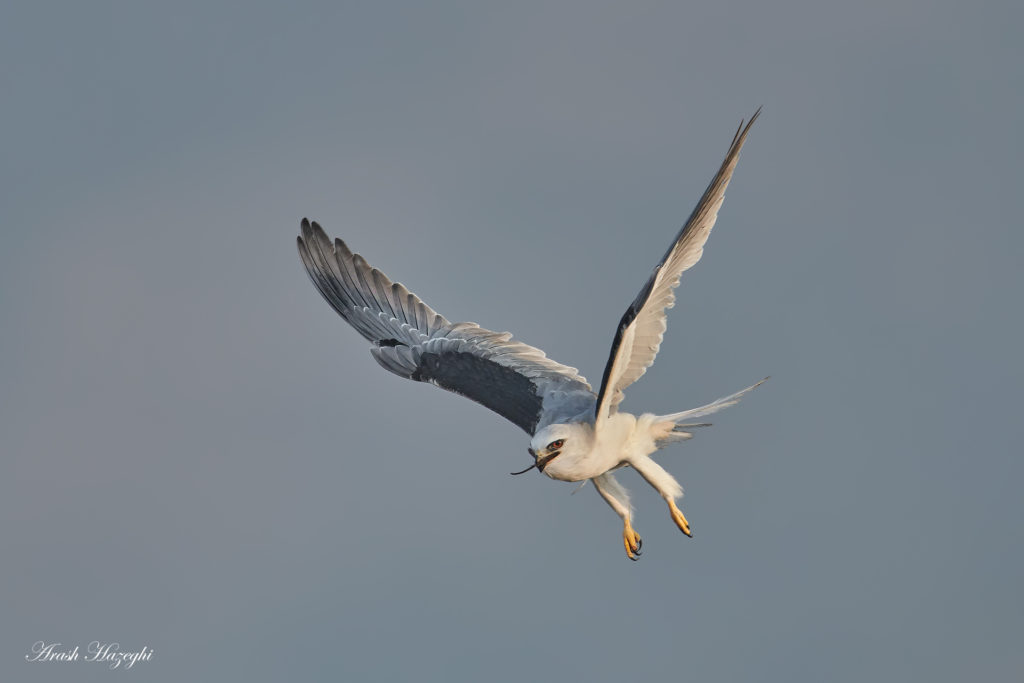
White-tailed kite with prey. Nikon D850, AF-S 600mm f/4 E FL + TC-14E III. ISO 1000 f/5.6 at 1/3200 sec. Hand held, processed with Capture One Pro. Click on the image to enlarge
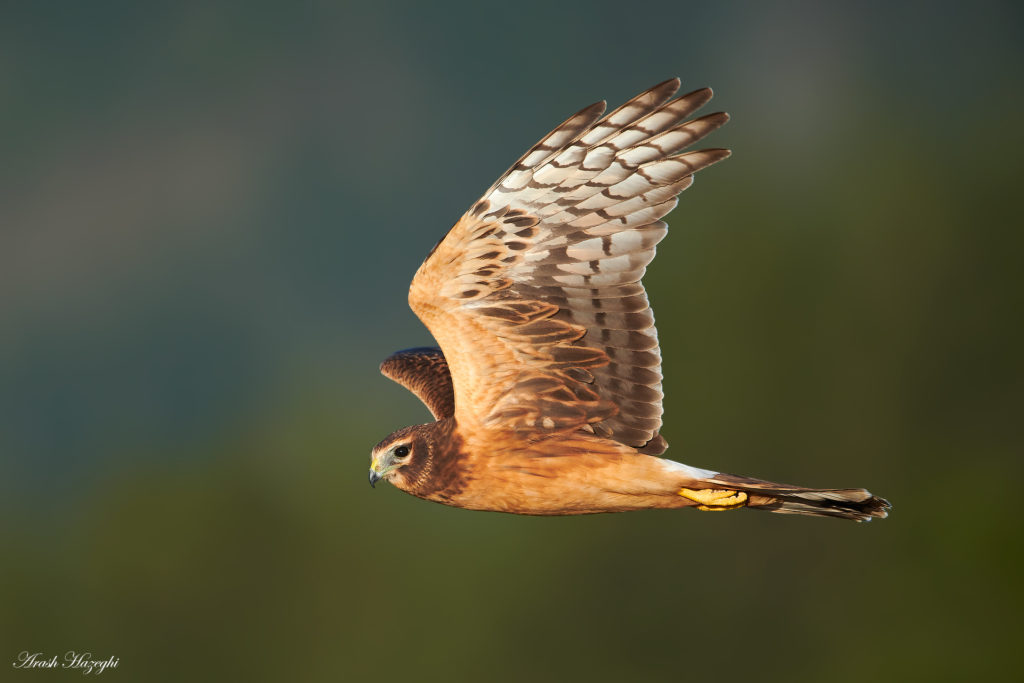
Female northern harrier (juvenile) . Nikon D850, AF-S 600mm f/4 E FL + TC-14E III PF. ISO 640 f/5.6 at 1/3200 sec. Hand held, processed with Capture One Pro. Click on the image to enlarge

Female northern harrier (juvenile) . Nikon D850, AF-S 600mm f/4 E FL + TC-14E III PF. ISO 1600 f/5.6 at 1/3200 sec. Hand held, processed with Capture One Pro. Click on the image to enlarge
If you are a bird photographer, these samples should have already convinced you of the capabilities of the D850 so enough said.
conclusion
The Nikon D850 is a very unique camera and there is nothing like it on the market at the time of writing this review. The Canon EOS-5D S(R) cannot compete with the D850, it is way too slow and its sub-par AF isn’t really suitable for action, its files are much noisier than the D850 and lack dynamic range. The EOS-5D Mark IV is closer but it has a significantly lower resolution and even smaller buffer capacity, it shoots only at 7 fps and its AF is not able to keep up with the D850 either. So compared to both of these two competitors the D850 is a no brainier bargain. The D850 isn’t meant to be a primary action or low light camera but Nikon has given it so much that it doesn’t fall too short: with the right skills, patience and luck, it is ready and capable of producing stunning images. If there is one area to be improved is the buffer capacity. Therefore, highly recommended.
Pros
+class-leading resolution and image quality in good light (up to ISO 1600).
+Excellent AF system, close to the D5 (f/5.6 or faster lens) and capable of tracking complex subjects.
+Attractive price and excellent value for money.
+Excellent ergonomics, controls, build quality adequate for professional use.
+45 mega-pixels and 9 fps >300 Mega-pixel per second bandwidth.
+Excellent finder, fully programmable buttons, back-lit buttons.
+ tilting LCD with extensive touch functions.
+Built-in Bluetooth and WiFi hardware (for use with Nikon app only)
Cons
-Limited buffer, only about 3 seconds of burst at full speed.
-Not the best high ISO performance (compromise). Not suitable for low light bird photography.
-Contrast detect AF in LV useless and slow, not great for tracking during video capture.
-Optional grip, battery and charger are required to achieve 9 fps, this adds weight and cost.
-Wireless software only usable with Nikon SanpBridge app. currently not functional with iOS.

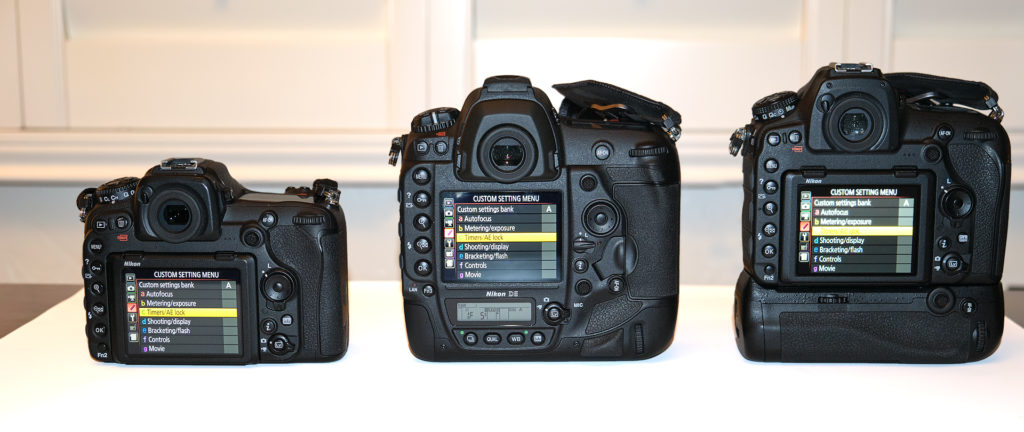
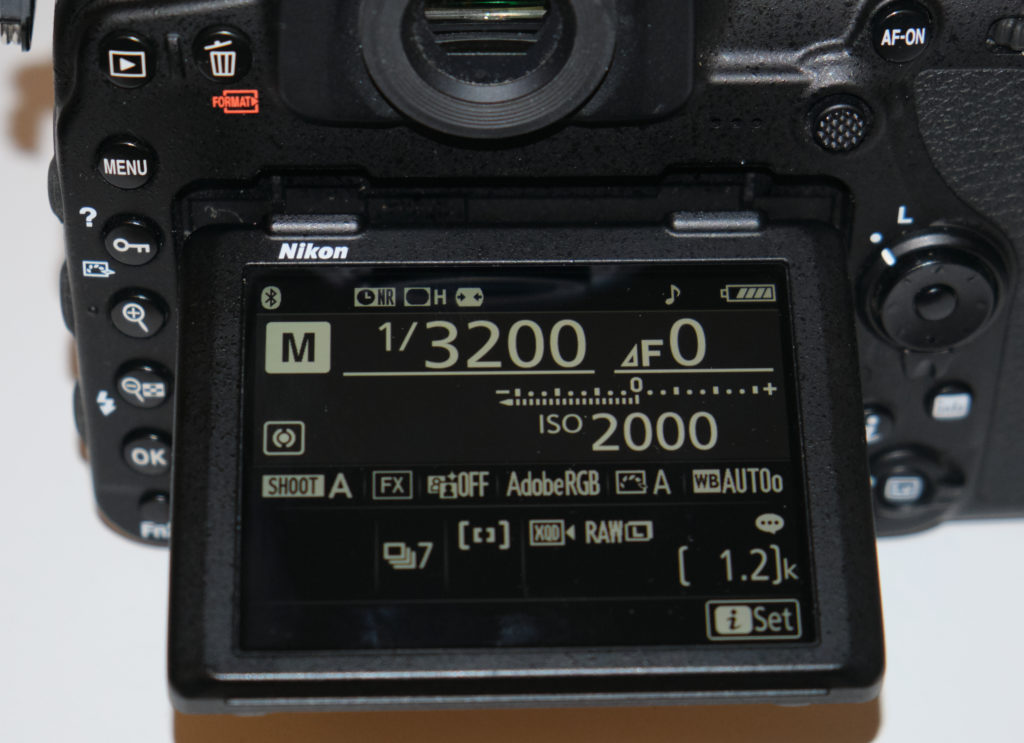

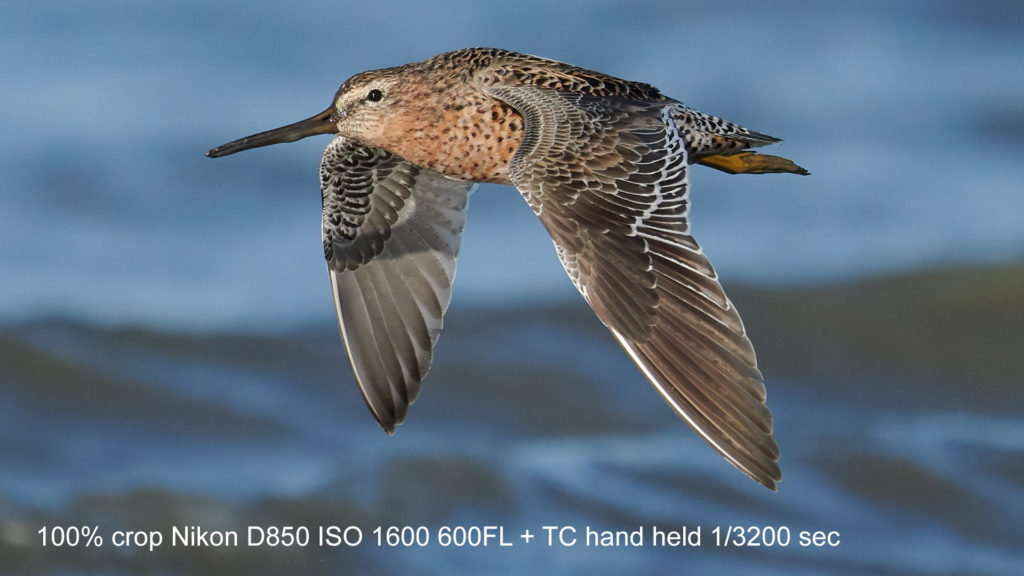


Thank you for your great article about the Nikon 850. Can you give your expert opinion if ETTR is still valid with the Nikon 850. On the the internet you read that camera’s are becoming more isoless. If that is the case why not underexpose 1 stop to protect the highlights and keep a higher dynamic range. Is there a difference between Canon and Nikon?
Hi Marc, all modern cameras (Nikon, Canon etc.) can handle up to 1 stop of under exposure in good light and lower ISO’s. The pro models can easily handle 2 or even more stops. At high ISO’s though if you underexpose the D850 files and try to boost the exposure in post the files will become too noisy.
hope this helps
Fantastic review, Ari! Your images humble me. I will be at Bosque soon with your friend, Art. He is excited about his Sony mirrorless gear. I am anxious to see how Sony does in the field. Hopefully 2020 will see Canon make big improvements. Thanks you for the review.
Dear Mr. Hazeghi,
Thank you for the careful and thorough review of the Nikon D850. I am just getting used to my new D850 and 500mm PF, and I am getting still-inconsistent, but overall splendid results, noticeably better than my 300mm PF with or without a TC-14 E III . My experience with the TC-14 E III on the 500mm PF is, I think, similar to yours-surprisingly good, but probably not often worth the risk of lost or slower AF at f/8. I am very curious about your preferred AF mode for BIF. To experiment, I have set AF-C with the AF-ON button set for Group AF, the PV button set for Single-Point AF and the joystick (pushed) for Dynamic-Area 25 AF. I am tending toward the conclusion that Group AF is the more reliable for BIF and that choosing between the two buttons for Group and D25 is unnecessary and a little confusing. Does it make sense to to use just two dedicated buttons, Group for BIF and Single-point for perched birds?
Again, thank you for your clear and concise reviews and advice.
Hi Denis, it depends on the subject but most of the time I use Grp AF
Hi,
I left a reply several days ago. How do I see a response. Here? By Email? Other?
Sorry! I just noticed that you had replied right here. Thank you and please ignore my last email. I love your photos and value your advice.
Thanks Denis for your kind words
Good review. just ordered the 1DX Mark III with the hope of resurrecting my stable of Canon lenses. In the meantime the Sony Alpha a9 II is taking over the Bird Photography World because of its mirrorless ability to track and hold focus on the eyes of BIF. When it comes to focus, disregarding ergonomics and construction, Sony has a mirrorless focusing advantage. Canon may have succeeded to do the same with their new flagship hybrid of sorts. We will see. In the meantime Nikon also has a nice advantage with the 500 PF. I’m not as impressed with the focusing ability of the 850 compared with the D500 and the D5 but it is hard to beat the 500 PF even by Canon’s 400 DO f4 which weighs more and costs considerably more. And soon we will have the D6. Fortunately the technology keeps moving forward and the competition plays leap frog to try and stay ahead of each other.
Anthony the AF capability of the D850 is great, if you aren’t impressed it is due to operator error not the camera 🙂
A new camera does not make 99.99% of the folks a better photographer as it can not make up for the lack of skills of the shooter which again is responsible for poor results 99.99% of the time. Gear cannot make up for talent and skill. I see a lot of folks posting and raving after switching, buying new gear, their photos, was, still is and will likely always be an instant delete for someone like me….
Also comments such as hold AF on BIF “eye” you hear on the web is just from lack of experience and misunderstanding basic concepts of shooting with a long lens. no camera can focus on the eye of a flying bird, it is barely 50 pixels wide. Unless you are doing head shots of captive birds at the zoo, you don’t need to focus on the eye because at a typical distance the DOF is far larger than a bird’s head any way.
best luck
The 850 is a superb piece of equipment. However, with the grip, it appears to focus a little slower than the D500, without it. I have no idea as to how the new Canon is going to perform when it comes to BIF. I hope it catches up with with the 850 and D500 because a lot of my lenses are sitting alongside my idle 1DX II. Some people need all the help equipment affords. The camera, may afford the least, but when 15 out of 16 consecutive shots are worthless who cares if the 16th is fabulous. I like Canon but it is not the only option since Nikon gave us alternatives which focus and track better. Whatever works, independent, of the cleaver publicity, I’d like to review, and possibly purchase. If birds sat poised and motionless almost any camera and almost any photographer would take outstanding photos. In the real world, besides the photographer, the only variable is the equipment. In my profession I purchase every conceivable option available and almost never consider the cost because I don’t have to. My profession is my avocation more than it is my actual vocation. The equipment is dependent on skill and much of what is sold is based upon hype and and fails to compete after we put it to use. Canon just released, what appears to be, a camera that addresses its focus and tracking failures. I’m not happy with the chip size but your outstanding photos were taken with that very same sized ship. I’m anxious to see what it does. Most of all I’d like to see what it does in your hands and I’d be happy to let you borrow it to find out.
All of your reviews and comments are consistent in one respect. You are addicted to sharpness. Despite the fact that you took some very nice BIF photos using the Nikon 200-500 zoom lens I doubt you used that lens for anything more than the review you gave. We both love sharpness but because I also love taking photos of small passerines I can’t help but to conclude that a zoom lens provides a considerable advantage since it accommodates the reality that photographer and subject distances often change within moments. With that understanding, in mind, it would be nice to know if you have any preferences for those photographers who need zooms to avoid missing opportunities? I have used fixed lenses on 2 camera bodies simultaneously, to avoid having to use zooms, but that seriously compromises opportunities. Personally I prefer the Sigma Sport over the Nikon 200-500 or the Canon 100-400. Why do I prefer it? Because the images are sharper. However, it is heavy. You simply can’t beat the toy like advantage of the 850 or D500 along with the 500 f5.6 lens. I like the combination so much that I often simply forego the use of any zoom. I pay a price because I miss opportunities but the photos I do get are almost always sharper. The Sigma does a nice job and if it weighed what the Nikon 500 f5.6 does I would not be writing this. The Canon 100-400 also does a fair job but only the Canon 5D Mark IV has the pixel density that permits it to compete with the Nikon 850 or D500 but the camera lacks the speed of the others and also lacks the focus advantage, for fidgety small birds, that the D500 affords. The 7D is an unacceptable choice. It is not the equivalent of the Nikon D500. A lot of us value your advice. We know you primarily use ultra sharp fixed telephoto lenses but your opinion on zooms, when they must be used by the rest of us, would be appreciated.
Hi Ari
I recall that you kept some Canon lenses for future camera comparisons. Have you had a chance to shoot the new 1DX3? It seems to have received upgrades to the AF. Wonder how it performs for BIF?
Hi Doug, unfortunately I no longer have a Canon super-telephoto lens to test with the 1DX III. On paper it looks like some major upgrades but so was the 1DX at the time
Hi Ari, a bit off Subject here, but is the D500 review still on
?
yes it is in the works
Excellent details
Waiting for d500 review considering pro quality
I am still confused between d500 and d850 for wildlife photography with pro level quality
Thanks, my D500 review has been posted for a while now.
[…] D500 review, D500 review BIF, Nikon D500 Ari review, Nikon D500 BIF review, Nikon D500 review ← Nikon D850 Review Sony A9 II for BIF, initial impressions and comparison vs. Nikon/Canon […]
Excellent review, Ari. Thank you. I’d like to hear your thoughts on using the D850 v the D7200 for cropped images of stationary song birds. I’ve had good results with the D7200’s 24MP in its DX format. Purely in terms of image quality, do you feel that the D850 with its full-frame format would offer superior sharpness and detail, given the same lens and distance from the bird? I’ve done the math: the D7200 would effectively put more pixels on the bird than the D850, but of course the D850 is known for excellent IQ. Do you feel that the trade-off of fewer pixels on the bird with the D850 is worth the gain in color sensitivity and low-light abilities? I often crop my images to about 2500×1200 pixels, especially when shooting warblers and other songbirds that I can’t approach as closely as I might approach a large, relatively patient bird like a gull.
Thanks Richard, I have never used a D7200 so I am not really familiar with the output of that camera. The D850 crop mode is quite similar to a D500 file.
best
Ari,
Your D850 review for BIF was excellent. I just recently (Dec. 2022) upgraded from my 24MP Nikon D7200 (which I still use) to the D850. For bird photography, I use the Nikon 300mm f/4 PF ED VR coupled with the TC-14E III teleconverter which provides an EFL of 420mm on the D850 and 630mm on the D7200.
Question: For bird photography, have you used Nikon’s 300mm f/4 PF ED VR coupled with the TC-14E III on the D850? if you use the (D850) 1.2 image area setting, the EFL is 504mm with 31.5 MP file size and f/5.6 max. aperture. Do you plan to review Nikon’s 300mm f/4 PF ED VR coupled with the TC-14E III on the D850?
Respectfully,
Steve M.
Hi Steve, thanks for the comments. I did not use the Nikon 300mm f/4 PF lens, it is a bit short for the subjects I photograph. My main lens was the 600mm f/4 E FL + 1.4X TC. I also used the 500 PF, please see my review of the tat lens if you are interested.